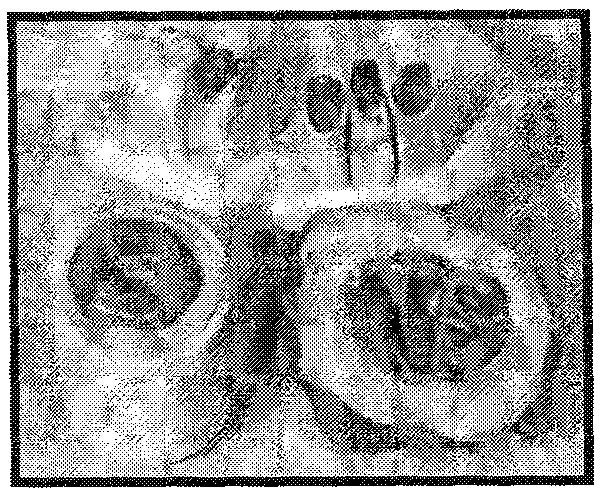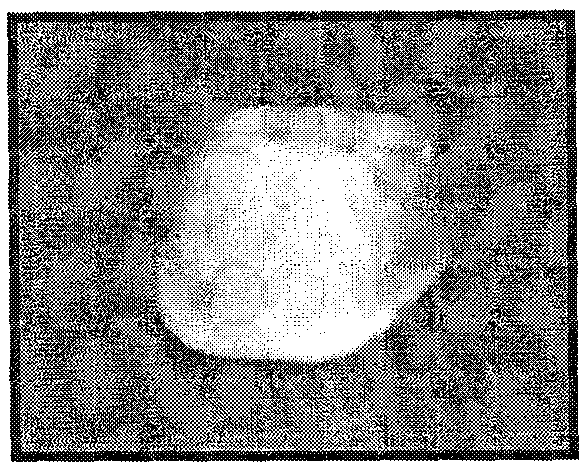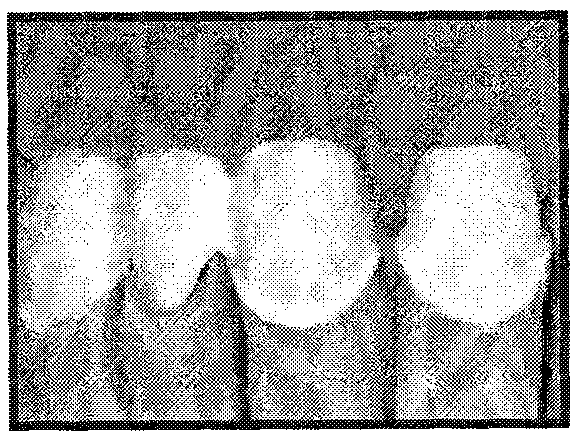Fully ceramic dental prosthetic material and method for preparing same
A technology of dental restoration and raw materials, applied in dental preparations, pharmaceutical formulations, medical science, etc., can solve problems such as poor mechanical properties, differences in real teeth, poor optical properties, etc., and achieve the goal of improving mechanical properties and reducing the sintering temperature of the matrix Effect
- Summary
- Abstract
- Description
- Claims
- Application Information
AI Technical Summary
Problems solved by technology
Method used
Image
Examples
Embodiment 1
[0030] Embodiment 1: Preparation of all-ceramic oral restorative material of the present invention
[0031] Al(NO 3 ) 3 As a precursor, prepare a solution with a concentration of 1 mol, and use NH 3 The pH of the aqueous solution is controlled to be 9, and the nano-alumina powder is prepared by hydrothermal treatment, alcohol washing, freeze-drying and sintering. ZrOCl 2 .8H 2 O is the precursor, adding 7.8% MolY (NO 3 ) 3 , prepared into a mixed solution with a concentration of 0.8mol, using NH3 aqueous solution as a precipitating agent, and controlling the pH to 9.2 to make zirconium and yttrium colloids undergo hydrothermal treatment, alcohol washing, freeze-drying, and sintering to obtain partially stable nano-zirconia powder. Alumina micropowders with a particle size of micron and nanometer-sized alumina and zirconia micropowders are selected and graded according to the principle of close packing. Among them, alumina with an average particle size of 2.8 μm accounte...
Embodiment 2
[0033] Embodiment 2: Preparation of all-ceramic oral restorative material of the present invention
[0034] Prepare alumina and zirconia powders by the method of Example 1, add partly dispersed nano-alumina and nano-zirconia powders, which form a rigid framework together with micron and submicron particles, wherein the average particle size of alumina is 2.8μm accounts for 50.1%, 0.1μm accounts for 13.5%, nanoscale Al 2 o 3 7%, nano zirconia accounted for 29.4%. The dosage ratio of the dispersant is: polyethylene glycol: sodium citrate: polyacrylamide=1:2:4. After the slurry is prepared, the bottom cap is coated with plastic according to the purpose of use, and after molding, it is pre-sintered at 1220°C to form a microporous matrix, and then at 1220°C, the biological glass-ceramics infiltrates into the interconnected micropores in a liquid phase to form Nano-scale microcrystalline film strengthens the composite structure. Wherein the weight percentage of biological glass-...
Embodiment 3
[0035] Embodiment 3: Preparation of all-ceramic oral restorative material of the present invention
[0036] Prepare alumina and zirconia powders by the method of Example 1, add partly dispersed nano-alumina and nano-zirconia powders, which form a rigid framework together with micron and submicron particles, wherein the average particle size of alumina is 2.8μm accounts for 51.7%, 0.1μm accounts for 10%, nanoscale Al 2 o 3 13.3%, nano zirconia accounted for 25%. The dosage ratio of the dispersant is: polyethylene glycol: sodium citrate: polyacrylamide=1:2:4. After the slurry is prepared, the bottom crown is coated with plastic according to the purpose of use, and after molding, it is pre-sintered at 1200°C to form a microporous matrix, and then at a temperature of 1220°C, the biological glass-ceramics infiltrates into the interconnected micropores in a liquid phase to form Nano-scale microcrystalline film strengthens the composite structure. Wherein the weight percentage of...
PUM
| Property | Measurement | Unit |
|---|---|---|
| particle diameter | aaaaa | aaaaa |
| flexural strength | aaaaa | aaaaa |
| particle size | aaaaa | aaaaa |
Abstract
Description
Claims
Application Information
 Login to View More
Login to View More - R&D
- Intellectual Property
- Life Sciences
- Materials
- Tech Scout
- Unparalleled Data Quality
- Higher Quality Content
- 60% Fewer Hallucinations
Browse by: Latest US Patents, China's latest patents, Technical Efficacy Thesaurus, Application Domain, Technology Topic, Popular Technical Reports.
© 2025 PatSnap. All rights reserved.Legal|Privacy policy|Modern Slavery Act Transparency Statement|Sitemap|About US| Contact US: help@patsnap.com



